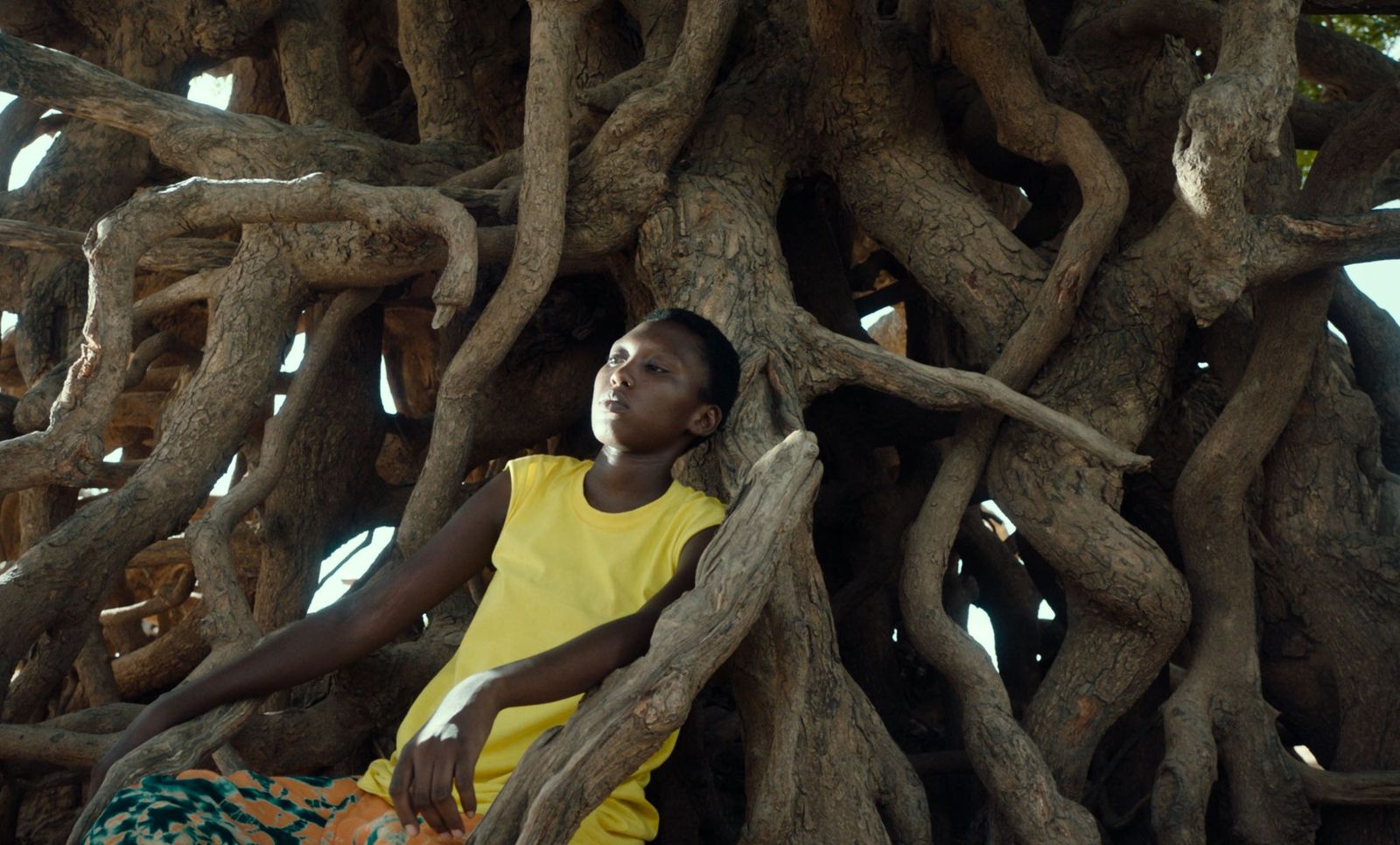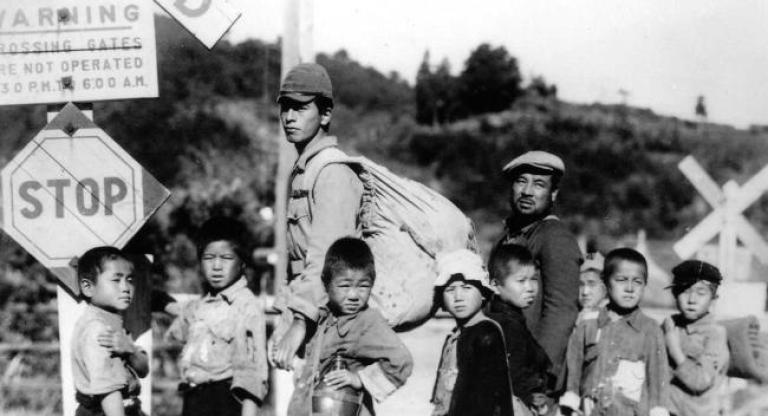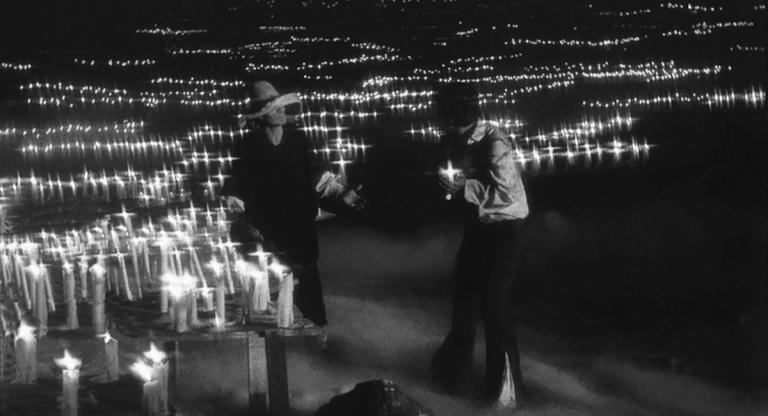Ramata-Toulaye Sy’s emerging body of work references and subverts a long history of Western narratives about love and rule such as Romeo & Juliet and Odysseus, while also drawing on magical realist traditions from West Africa. Her work engages with the back-and-forth between the so-called great men of history and those who are most likely to be expunged from written and visual records: Black femmes. This is not only clear from the fact that her directorial debut, Banel & Adama (2023), premiered as the only debut in competition at last year’s Cannes Film Festival, in addition to making Sy the second Black woman to participate in competition. Being in competition is a weighty distinction and last year’s slate reflects the pathetic state of diversity at the world’s major film festivals, especially one that lends itself too-readily to headlines. In an interview with Variety, Sy—born in Paris to two Senegalese parents—expressed some frustration toward the media’s emphasis on the lack of Black filmmakers at film festivals.
At the start of Banel & Adama, we first meet Banel through her silky, captivating voice: “Everyday I hear them call to me, in their soft, pretty voices: Banel, Banel, Banel! But I do not respond to them.” Shortly after, Sy introduces an anonymous chorus of voices that sound like crickets—not unlike the chorus in Greek tragedies like Antigone—that waver with the images of a growing, flickering light. From here, in the sun-drenched fields of rural Senegal, we meet the two well-known village lovers. Banel and Adama move at molasses pace, the movement of their limbs mirroring their scarves, and the grass surrounding them blowing in the wind. Their obsession with each other is palpable and the two cannot keep their eyes off one another. Banel quiets the ongoing chorus with a whisper: “Yes, I love. I am a woman who can love.”
Sy’s debut film features a majority Senegalese cast and a first-time actor as its star. It is an epic love story set in the northern desert of Senegal, in the town where her parents grew up. By following two magnetic lovers, Sy asks, What does it mean to fall in love for the first time and to create this love story onscreen? Her universal parable follows the young Banel (Khady Mane) and her first year of marriage with Adama (Mamadou Diallo), whose romance with her is embroiled in their village’s everyday politics and gossip. The couple thinks they can conquer the world together, especially when Adama refuses his lineage as chief. “Any man can be chief,” Banel reminds him.
They dig out their home in an isolated (and supposedly haunted) part of the village, but as the conditions of the drought affecting their community worsen, the pair attract continuous pressure from their respective families and neighbors. The community blames the drought on Adama’s decision to refuse his position as Chief. Deeply unhappy in Adama’s absence, Banel is fiercely independent; her rebellious behavior is repeatedly scrutinized and her mother constantly questions her lack of pregnancy. Her twin brother tells her not to sit cross-legged and one girl, who initially admires Banel for her unique relationship with Adama, calls her “mad” and furtherly refuses to speak with her. Family members and even Adama begin to question their plans to live outside of the community, and yet Banel develops an even more stubborn, although isolated stance. Unable to imagine living like the “rest of them,” she returns over and over to her partner, their insularity, and their dreams to live on their own.
Navigating the different shifts in the storyline, Sy delivers a complex portrait of a woman brimming with desire and belief in her own love story: she is a fervent lover with instincts to kill. Banel is at once gracious and unlikeable; she spits to kill the flies, slingshots creatures, and even fires at Adama once when his loyalty to her becomes increasingly torn. Enclosed in the film is a dare: the invitation to depict a woman who refuses her lineage, her role in society, and wields violence and desire to her own freedom. Sy presents a character whose attempt to own her destiny can be—and is—interpreted as “mad” and sinister, but it is also her small form of liberation.
When shooting Banel in the daytime, Sy’s palette is a golden-rich, heavenly-daylight. In the light, the viewer is made to assume we know Banel and that what we see is real. She goes with Adama to dig, she prays with him, she works in the fields with other women, she serves afternoon tea, and she wields her slingshot. But Sy’s most striking and mysterious shots of Banel are at night. In one scene, when Adama leaves for the night to tend to the village’s dying cattle, Sy captures Banel alone in her mosquito net. The shot, extended for about a minute, casts Banel in deep-blue lighting; the gleaming net against the black background becomes ghostly and the netting comes to life, at once a womb and a cage. It is an unyielding image, teeming with mystery and artistry. By placing Banel in a small domestic setting, the shot seems staged. With these scenes, Sy complicates the concept of visibility and privacy for her character by insisting that there is value in ambiguity; she invites the viewer to create answers for themselves.
Sy uses ambiguity to instill complexity in a narrative about the plight of a small village in the African desert, which would ordinarily be considered a universal story. Banel & Adama’s repeated images of a dying cow, dead cows being cut for consumption, and cow remains, gesture at interspecies cohabitation—without cattle, human life becomes more precarious in Northern Senegal—and the film’s narration alludes to a history of colonial exploitation where land-grabbing reduced regions of Northern Senegal to nomadic habitation.
We come to learn of Adama and Banel’s love through their shared project: to dig out homes that have been covered by the sand. The audience does not know how long ago these homes were inhabited; Sy only delivers a hint, through Banel’s twin brother, that they carry an unbenign weight of the past. Through wide-lens shots, Sy captures Banel and Adama in the desert mounds with shovels. In these scenes, their loneliness in the landscape is exaggerated, as if they are the only ones left on earth. “When will we go to dig?” becomes a question that Banel will begin to ask more frequently—and urgently—throughout the film. As their digging project evolves, Banel dramatically summons Adama to dig under extreme heat with his hands—“Dig! Dig!”—and the couples’ motions foretell the film’s denouement, which involves the digging of graves for lives lost by the drought. Here, Banel’s drive is captured in Adama’s wide-eyed, terrified gaze; Sy’s camera eye keeps the two lovers incredibly close, but in separate frames. The digging becomes how one image meets another and forms a relation; is the act of digging one of beginning or one of end?
Banel & Adama does not concern itself with providing closure; instead, Sy makes room for the audience to interpret its events. By the end of the film, there is no clear answer that surfaces in relation to the couple’s digging project. Similarly, no judgment is made about Banel’s project of coupledom and how she moors herself to a fugitive symbol, one that’s always in the process of escaping itself, then coming back to reaffirm itself, only to become a source of self-destruction again.
Banel & Adama opens Friday, July 19, at the Roxie and runs through the weekend.
Previously:
Banel & Adama screens this evening, April 27, at BAMPFA as part of the San Francisco International Film Festival.






